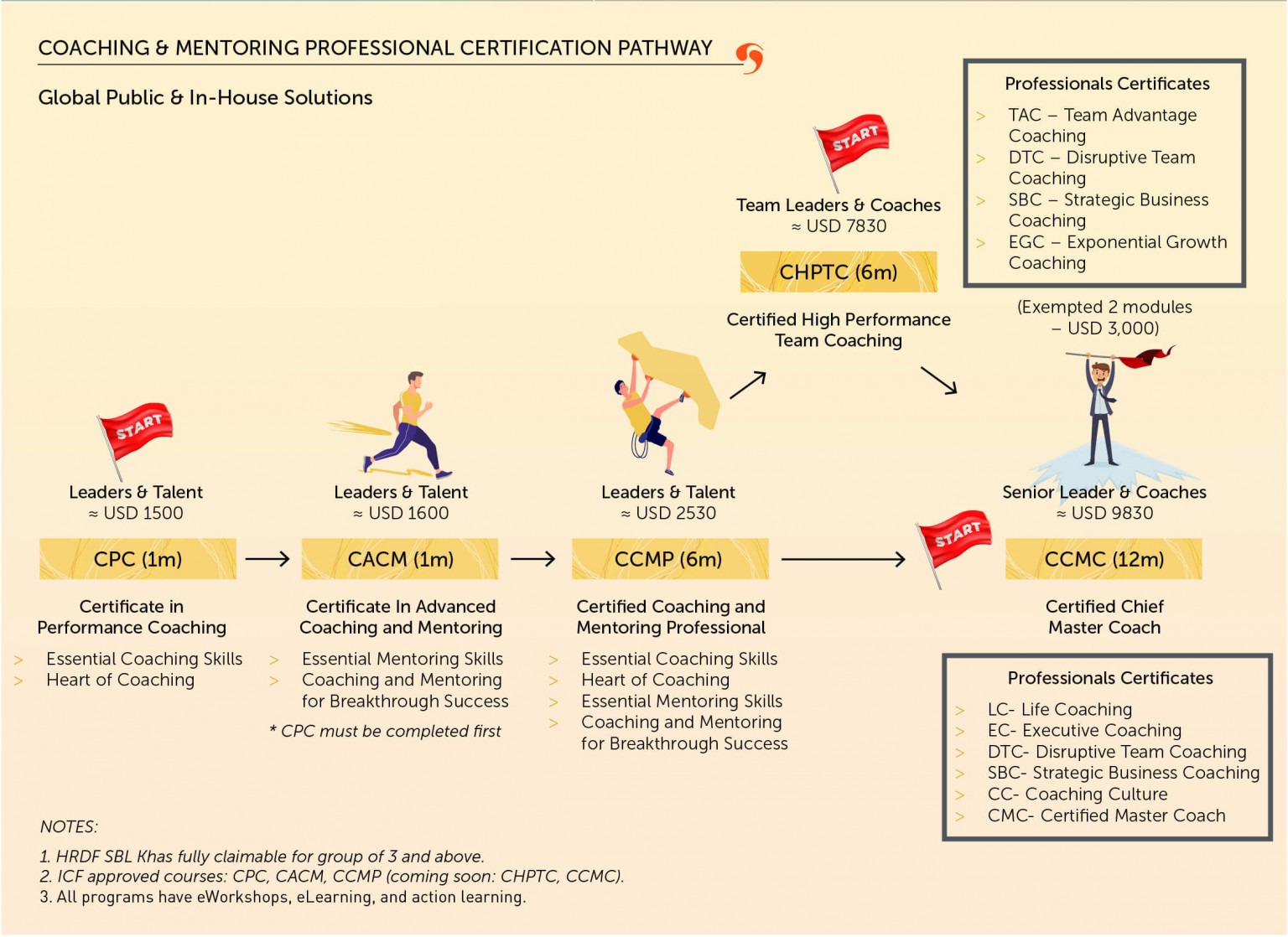Agility coaching helps people become more flexible responsive to change, which is critical for success in the current business world.
Given today’s rapidly shifting marketplace, the ability to adapt isn’t just an advantage – it’s essential for survival and growth. Businesses face constant pressure from evolving customer demands, technological advancements, and competitive landscapes. Thriving in this environment requires business agility: the capacity to sense changes and respond quickly, effectively, and sustainably. This is where agility coaching becomes a critical enabler, guiding organizations, teams, and individuals to build the mindset, skills, and practices needed for continuous adaptation and lasting success.
|
Author: Jonathan M. Pham |
Highlights
- Agility coaching is a collaborative partnership that enhances the ability of individuals, teams, and organizations to navigate complexity and adapt to change by fostering an agile mindset.
- Given that organizations must rapidly adapt to market volatility, evolving customer expectations, technological disruption, and intense competition to remain viable and successful, cultivating business agility is essential.
- Agility coaching enhances organizational capabilities by fostering adaptability, improving decision-making and efficiency, strengthening collaboration, increasing innovation, and boosting employee engagement.
- An effective agile coach partners with clients to foster their agility by guiding understanding, developing strategies, facilitating growth, challenging mindsets, and providing feedback. Their role typically requires a diverse skillset encompassing Agile principles, coaching, mentoring, teaching, facilitation, communication, problem-solving, emotional intelligence, change management, business acumen, and objectivity.
- To introduce agility coaching, organizations should assess their readiness and goals, find suitable coaches (internal or external), begin with a small pilot, secure leadership support, and measure and communicate the impact.
What is Agility Coaching?
Agility coaching is a collaborative partnership focused on developing the capability of individuals, teams, and entire organizations to navigate complexity and respond effectively to change. It’s more than just implementing Agile frameworks (like Scrum or Kanban); it’s about fostering an agile mindset and building adaptive capacity.
An agility coach utilizes a range of stances and techniques tailored to the situation, including:
- Teaching: Imparting knowledge about agile principles, practices, and frameworks.
- Mentoring: Sharing experience and providing guidance based on the coach’s own journey.
- Facilitating: Guiding group processes, discussions, and decision-making to achieve desired outcomes.
- Coaching: Partnering with individuals or teams through powerful questions and active listening to help them unlock their own solutions and potential.
- Consulting: Providing expert advice or solutions when appropriate.
- Modeling: Demonstrating agile behaviors and mindset.
Through these approaches, organizations may embed flexibility and responsiveness into their culture and operations, enabling them to seize new opportunities and overcome challenges proactively.

Why Business Agility Matters Now More Than Ever
Before diving into coaching, let’s underscore why agility is paramount in the current business landscape:
- Market volatility
Economic shifts, global events, and changing regulations demand rapid strategic adjustments. Businesses operate in what many, including analysts at McKinsey, describe as an era of unprecedented uncertainty. The inability to pivot quickly in response to unforeseen disruptions is a significant risk factor for long-term viability.
- Customer expectations
Customers expect personalized experiences, faster service, and constant innovation. Salesforce’s “State of the Connected Customer” report consistently finds that a vast majority of customers (often over 80%) say the experience a company provides is as important as its products or services. This puts immense pressure on organizations to adapt offerings and interactions swiftly.
- Technological disruption
New technologies have been continually reshaping industries. Research from institutions like MIT Sloan has shown that digitally mature companies – those adept at leveraging technology for agility – are significantly more profitable than their less mature counterparts, highlighting the need to adapt to or lead technological change.
- Competitive intensity
Competitors are constantly innovating. Studies often emphasize that in dynamic markets, competitive advantage is transient. Sustainable success requires the ability to continuously sense and seize opportunities faster than rivals, which is a core tenet of business agility.
All in all, organizations lacking agility often struggle with slow decision-making, missed opportunities, inefficient processes, and disengaged employees.
Read more: Leading Through Uncertainty – How to Navigate Turbulent Times
Benefits of Agility Coaching
- Enhanced adaptability and market responsiveness
Agility coaching cultivates the ability to sense market shifts and customer needs earlier and pivot strategies accordingly. This translates to faster delivery of value, improved customer satisfaction, and a stronger competitive position.
The annual State of Agile report frequently finds that the top reasons organizations adopt agile methods are to ‘accelerate product delivery’ and ‘enhance the ability to manage changing priorities’ – direct outcomes supported by effective coaching.
- Improved decision-making and efficiency
By fostering critical thinking, data-driven insights, and clearer communication pathways, coaching empowers individuals and teams to make faster, more informed decisions. As such, it reduces waste associated with delays or missteps and streamlines workflows.
Indeed, McKinsey research has indicated that agile transformations can dramatically speed up decision cycles – and suggests agile organizations have a higher likelihood of making better, faster decisions, reducing waste and improving flow.
- Stronger collaboration and communication
Agility coaches act as facilitators, helping teams improve how they communicate, resolve conflicts constructively, and leverage collective intelligence. In other words, their presence contributes to building trust, strengthening relationships, and fostering a more unified and productive work environment.
According to Gallup research, highly engaged teams – often characterized by strong communication and collaboration fostered in agile environments – show significantly higher profitability, productivity, and lower turnover rates. Coaching is key to nurturing these team dynamics.
- Increased innovation and learning culture
As suggested by Deloitte’s insights, ‘adaptive organizations’ – those that foster learning and experimentation – are better equipped to innovate and respond to disruption. Coaching encourages experimentation, feedback loops, and learning from failures – thereby creating a safer environment for new ideas to emerge and be tested rapidly.
- Higher employee engagement and resilience
When individuals feel empowered, understand their contribution, and possess the skills to navigate change, their engagement and resilience naturally increase. Coaching supports this personal and professional growth.

The Agile Coach: Role, Mindset, and Key Skills
An effective agile coach acts as a catalyst for change, partnering with clients (individuals, teams, leaders) to help them achieve greater agility. Their primary focus is on building the client’s internal capability, rather than simply providing answers.
Key aspects of the role:
- Guides understanding: Discuss agile principles/ values, and tailor them to the clients’ specific context.
- Develops strategies: Collaborates with clients to identify goals and co-create actionable plans for improvement.
- Facilitates growth: Creates environments for learning, experimentation, and reflection.
- Challenges mindsets: Encourages clients to question assumptions, step outside comfort zones, and embrace new ways of working.
- Provides feedback: Offers constructive observations to foster awareness and improvement.
Essential mindset and skills:
To fulfill this role effectively, an agile coach needs a blend of mindset attributes:
- Deep understanding of Agile & Lean principles: Foundational knowledge of various agile frameworks (Scrum, Kanban, etc.), lean thinking, and the underlying values and principles.
- Professional coaching skills: Mastery of core coaching competencies like active listening, powerful questioning, creating awareness, and designing actions. This often involves expertise in intepreting human behavior and motivation.
- Mentoring ability: Drawing on relevant experience to offer guidance and share insights when appropriate.
- Teaching proficiency: The ability to clearly explain concepts, practices, and frameworks to different audiences.
- Facilitation expertise: Skillfully guiding group dynamics, meetings, and workshops to ensure productive collaboration and decision-making.
- Strong interpersonal & communication skills: Building rapport, communicating clearly and empathetically, providing input, and navigating difficult conversations.
- Problem-solving & systems thinking: Analytically identifying root causes of impediments (at individual, team, and organizational levels) and helping clients develop systemic solutions.
- Emotional intelligence: High self-awareness, empathy, adaptability, and resilience are vital for understanding client needs, managing challenging situations, and building trust.
- Change management acumen: Being experienced with the dynamics of organizational change and knowing how to support individuals and teams through transitions.
- Business acumen & strategic thinking: Understanding the broader business context, linking agile practices to strategic goals, and helping teams see the bigger picture.
- Objectivity & observation: The ability to observe situations without judgment, identify patterns, and challenge assumptions constructively.

Agility Coaching in Action: Real-World Examples
While specific internal coaching details are often proprietary, the impact of agile principles, often supported by coaching, is evident in many successful companies:
- Amazon: Known for its customer obsession and rapid innovation (e.g., AWS, Kindle). Amazon heavily relies on small, autonomous “two-pizza teams” and iterative development, principles often nurtured through agile coaching, to quickly respond to market opportunities and customer feedback.
- Microsoft: Under Satya Nadella’s leadership, Microsoft underwent a significant cultural transformation towards a growth mindset and greater agility. This shift, likely supported by internal and external coaching, enabled faster innovation cycles, particularly in cloud services (Azure), enabling them to regain market leadership.
- Google: Google famously fosters experimentation and rapid prototyping using lean and agile approaches. Practices like “20% time” (though evolved) and Objectives and Key Results (OKRs) reflect an agile mindset, likely cultivated and sustained with coaching support, allowing them to explore diverse product areas.
- Spotify: While the “Spotify Model” is widely discussed (and debated), its focus on autonomous squads, chapters, and guilds highlights an organizational design aimed at agility and decentralized decision-making – concepts often implemented and refined with agile coaching guidance.
(Disclaimer: The specific extent and nature of agility coaching in these companies may vary and isn’t always publicly detailed.)

FAQs
What is the purpose of agility coaching?
The primary purpose is to build the capability of individuals, teams, and organizations to adapt effectively and thrive amidst constant change. It equips them with the mindset, skills, and practices to respond quickly to challenges and opportunities, ultimately driving sustainable success.
What are the components (C’s) of agility?
The components of agility include:
- Communication allows for the sharing of ideas and information between team members.
- Coordination helps teams work together and meet deadlines.
- Creativity enables teams to come up with innovative solutions that are tailored to their needs.
- Culture is necessary for teams to work together and remain focused on their goals.
- Commitment ensures that teams stay motivated and determined to work toward success.
How does an Agile Coach differ from a Scrum Master?
While there may be overlap, the scope generally differs. A Scrum Master typically focuses on helping a specific team effectively implement the Scrum framework, ensuring adherence to its roles, events, and artifacts, and removing impediments for that team.
On the other hand, an Agile Coach often works at multiple levels (individual, team, leadership, organization) with a broader focus on fostering an overall adaptive mindset, improving systemic flow, guiding organizational change, and potentially working with various frameworks beyond just Scrum.
| Feature | Scrum Master | Agile Coach |
| Scope / Level | Specific Team |
Multiple Levels (Team, Leadership, Organization)
|
| Primary Focus |
Effective Scrum implementation, Team Impediments |
Overall Agile Mindset, Systemic Flow, Org Change |
| Framework Focus | Primarily Scrum |
Broader (Scrum and potentially others)
|
Read more: 10 Characteristics of a Good Coach
What are the levels of focus for an agile coach?
Agile coaches usually operate across three interconnected levels:
- Individual: Coaching individuals (team members, leaders, stakeholders) on their roles, skills, mindset, and personal growth.
- Team: Helping teams improve collaboration, processes, delivery, and self-organization based on agile principles and practices.
- Organizational/system: Addressing systemic impediments, fostering an agile culture across departments, coaching leadership, and aligning initiatives with broader business strategy.

Who can become an agile coach?
There isn’t one single path. Successful agile coaches often come from diverse backgrounds (e.g., project management, software development, business analysis, HR, management) but share key attributes. Crucially, they need to demonstrate a deep understanding of agile principles, significant practical experience working in or with agile teams, and strong coaching, facilitation, and communication skills (as detailed earlier).
While formal certifications (like those from ICF, Scrum Alliance, ICAgile) may provide structure and credibility, practical experience, continuous learning, and a genuine coaching mindset are paramount.
Check out ITD World’s world-renowned professional coaching certification solutions here!
Getting Started: Introducing Agility Coaching to Your Organization
If you’re considering agility coaching, here’s a possible approach:
- Assess readiness & define goals: Take the time to reflect on your organization’s current challenges and why you believe agility coaching is needed. What specific outcomes are you hoping to achieve (e.g., faster time-to-market, improved team morale, better cross-department collaboration)?
- Find the right fit: Decide whether to go with internal coaches or hire external ones. Look for those whose experience and style match your organizational culture and goals – and make sure to prioritize experience and demonstrated coaching skills over just certifications.
- Start small & pilot: Begin with a pilot program focusing on a specific team, department, or initiative. This allows for learning and adaptation before a broader rollout.
- Secure leadership buy-in: Ensure that the management is well aware of the value of coaching, champion the initiative, and model agile behaviors themselves.
- Measure and communicate impact: Define how you will measure progress (qualitative and quantitative) and regularly communicate successes and learnings.
Final Thoughts
Agility coaching is not a quick fix, but a strategic investment in building a resilient, adaptive organization. By cultivating the right mindset, skills, and collaborative practices, businesses can move beyond simply reacting to change and learn to proactively shape their future. Partnering with skilled agile coaches provides the guidance and support needed to navigate complexity, unlock potential, and pave the way for sustained growth and innovation in today’s unpredictable world.
Other resources you might be interested in:
- 7 Types of Coaching in the Workplace: A Practical Guide
- 10 Common Coaching Challenges: Navigating Difficult Scenarios
- 10 L&D Trends to Help Your Workforce Thrive
- Business Process Transformation: Strategies for Success
- Future Ready Organization: 11 Tips to Building One
- 70 Agility Quotes: Adapt, Innovate, and Thrive



